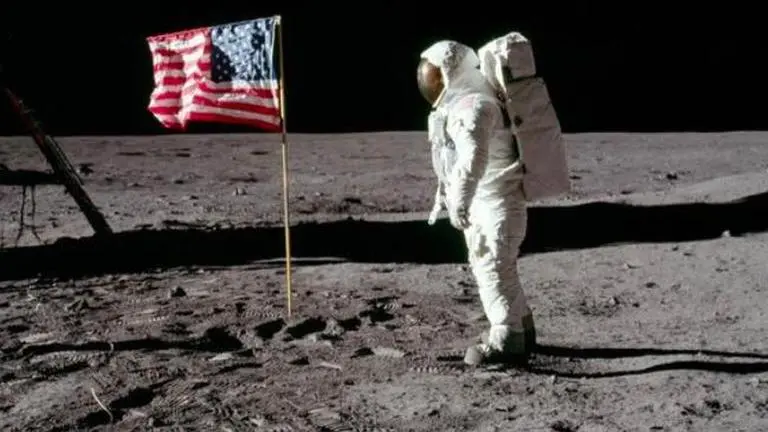Updated 20 July 2020 at 08:05 IST
Historic Apollo 'Moon Landing' footage enhanced & restored using AI; watch
A photo and film restoration specialist, who goes by the name DutchSteamMachine, used advanced AI techniques to upscale the Moon Landing's video quality.
- Science News
- 2 min read

An incredible 4K footage of NASA's Apollo 16 rover's moon landing from 1972 with improved 60 Frames Per Second and enhanced visuals using Artificial Intelligence has been released on YouTube. Earlier, despite NASA restoring and enhancing some of the most popular Apollo footages, some of the segments of the moon-landing clip were distorted and blurred. However, the AI specialists have now managed to improve the visuals using AI technology to give viewers and astronomy lovers a brand-new experience.
In order to create more vivid visuals from the restored footages which were originally shot at the moon, photo and film restoration specialist, who goes by the name DutchSteamMachine, employed AI techniques to upscale the video quality. As per a space report, the specialist managed to boost the resolution of footage where it was shaky while retaining the visuals’ quality and pixels. Further, the noisy and low-resolution frames were transformed using a module that reconstructed frames.
Advertisement
Speaking to a leading broadcaster, the specialist said that he wanted to provide an experience on the old Apollo moon landing footage like never before. He added, while the footage was originally shot with 12 frames per second (FPS), it has been upscaled to 60 FPS to give a clearer and defined frames. In the clip, now reconstructed using AI, one can see sharp visuals of the moon's surface at Apollo 15's landing site, Hadley Rille.
Neil Armstrong taking his "first step"
Additionally, one can also clearly see astronaut Neil Armstrong taking his "first step" on the moon. The visuals were initially shot on a camera installed inside a Lunar Module that shot a hazy video on a 16mm frame. Using a depth awareness technique known as INterpolation, or DAIN on the frames, the specialist was able to bring out the key details in the footage, as per a report.
Advertisement
Explaining the amount of time that may have been required to edit the entire footage, the specialist said that a video of just 5 minutes can take anywhere from six to 20 hours to complete. Further, in a report, he revealed that the footage required a high-end GPU to generate motion interpolation or motion-compensated frame interpolation that made the iconic video appear “more fluid”.
(Image Credit: NASA/Jet Propulsion Laboratory)
Published By : Zaini Majeed
Published On: 20 July 2020 at 08:05 IST
